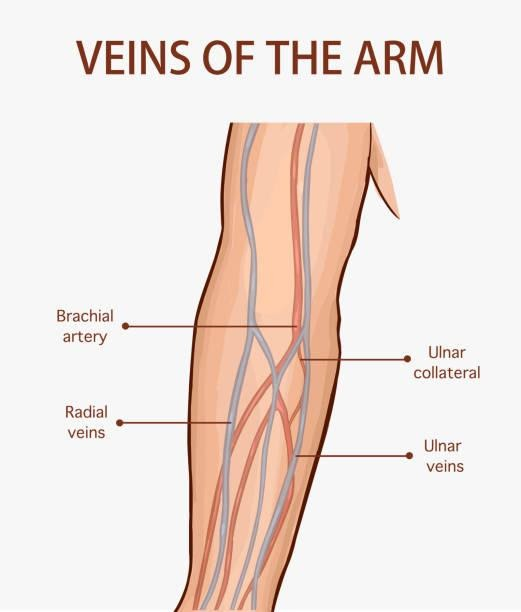
What is the function of veins?
Answer
400.2k+ views
Hint: Veins carry carbon dioxide in the blood except for the pulmonary vein that carries oxygenated blood from lungs to heart. So the pulmonary artery and pulmonary vein do not carry carbon dioxide. Veins are essential for the organism's body as it carries blood in it. Veins are spread all over the body. Veins usually carry deoxygenated blood from the heart to other parts of the body.
Complete answer:
Veins in plants help in carrying cell sap and also carry minerals, water-rich nutrients into the plant body. Leaflet and venation arrangement may be a separate set-in plant body. In human beings there are three sets of veins- Deep veins, Superficial veins and pulmonary veins. Each vein is an exception and carries different functions.
Examples of Hepatic portal vein are- blood to the liver. Portal vein or hepatic vein arises from hepatic duct of the liver.
The vein we will be explaining here is the portal vein. If the Hepatic portal vein gets damaged it shows liver Cirrhosis.
Veins are present in both animal as well as plant bodies. Blood vessels which carry deoxygenated blood from other parts of the body to the heart are called veins. Veins carry carbon dioxide in the blood except for the pulmonary vein that carries oxygenated blood from lungs to heart.

Note:
As we discussed veins and how essential veins are for the body, Prognosis depends on the nature of the liver and cardiac disease. As well as the location of the shunts. In severe cases liver transplantation could also be necessary. So, as we discussed a portal vein, its function and important examples of the vein.
Complete answer:
Veins in plants help in carrying cell sap and also carry minerals, water-rich nutrients into the plant body. Leaflet and venation arrangement may be a separate set-in plant body. In human beings there are three sets of veins- Deep veins, Superficial veins and pulmonary veins. Each vein is an exception and carries different functions.
Examples of Hepatic portal vein are- blood to the liver. Portal vein or hepatic vein arises from hepatic duct of the liver.
The vein we will be explaining here is the portal vein. If the Hepatic portal vein gets damaged it shows liver Cirrhosis.
Veins are present in both animal as well as plant bodies. Blood vessels which carry deoxygenated blood from other parts of the body to the heart are called veins. Veins carry carbon dioxide in the blood except for the pulmonary vein that carries oxygenated blood from lungs to heart.

Note:
As we discussed veins and how essential veins are for the body, Prognosis depends on the nature of the liver and cardiac disease. As well as the location of the shunts. In severe cases liver transplantation could also be necessary. So, as we discussed a portal vein, its function and important examples of the vein.
Recently Updated Pages
Master Class 11 Economics: Engaging Questions & Answers for Success

Master Class 11 Business Studies: Engaging Questions & Answers for Success

Master Class 11 Accountancy: Engaging Questions & Answers for Success

Master Class 11 English: Engaging Questions & Answers for Success

Master Class 11 Computer Science: Engaging Questions & Answers for Success

Master Class 11 Maths: Engaging Questions & Answers for Success

Trending doubts
State and prove Bernoullis theorem class 11 physics CBSE

1 ton equals to A 100 kg B 1000 kg C 10 kg D 10000 class 11 physics CBSE

State the laws of reflection of light

One Metric ton is equal to kg A 10000 B 1000 C 100 class 11 physics CBSE

1 Quintal is equal to a 110 kg b 10 kg c 100kg d 1000 class 11 physics CBSE

Difference Between Prokaryotic Cells and Eukaryotic Cells




